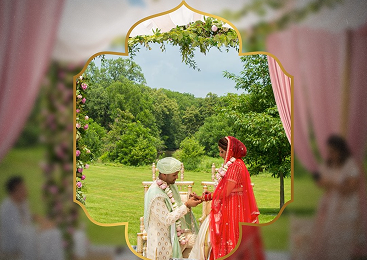1. Crafting the Perfect Wedding Menu: Seasonal, Diverse, and Memorable
The celebration of tying the knot is one of life’s most joyous and significant events. The emotional charge and the sensory delights of such a day will linger in the memory not just of the happy couple, but of all who attend. Among the many elements that contribute to the success of a wedding event, the menu stands out—quite literally—as a reflection of the couple’s love story and the coming together of friends and family to cherish and celebrate. A wedding menu isn’t just about incredible flavour; it’s a fusion of the culinary arts and design, aligning with the seasonal and personal touch that a wedding radiates. This guide is a lavish spread of insights on crafting a wedding menu that resonates and delights in equal measure.
2. Understanding Your Diverse Guest Base
Gone are the days of monolithic wedding gatherings. Today’s nuptials are a melting pot of age, culture, and taste. Before pen meets paper on your culinary odes, careful consideration of who will be sampling your delights is essential. Are your guests a blend of cosmopolitan palettes or traditional, family-oriented eaters? Do you have a significant number of vegetarians or vegans?
To create a menu that caters to this diverse base, consider offering a mix of customizable food stations, where guests can embellish their dishes to their preference. Asian stir-fry stations, artisanal taco bars or customizable salad stations are a sure way to offer something for everyone. Remember to have prominent signages and staff who can guide your guests through any dietary concerns.
3. Seasonal Sensibilities
Seasons not only dictate what’s stylish – they guide what tastes best too. Incorporating a seasonal touch to your menu ensures that your dishes are at the peak of freshness and flavour. Summer weddings can feature lighter fare, with abundant fruit and salads. Autumn calls for earthy tones and harvest vegetables. Winter traditionally suggests heartier dishes, while spring sings of rejuvenation with greens and floral hints.
Creating a menu that oscillates with the seasons highlights not only your adaptability but also your attention to detail. A winter wedding might spotlight rich stews or braised meats, while a summer soiree might lean into barbecued treats or picnicky sandwiches and spreads. Seasonal also extends to the drinks; think spiced cider in winter and refreshing lemonade in summer.
4. Bringing Cohesion to Culinary Diversity
Cuisines are the handprints of culture. A modern wedding menu should reflect the diversity of palates, offering a rich tapestry of global flavors. However, this diversity shouldn’t come at the cost of cohesion. Your culinary selections should flow, not feel like a checklist of foods.
Cocktail hours should feature a well-balanced assortment of canapés and finger foods, from global antipasti platters to delicate Asian dumplings. Your champagne toasts can be bookended with a rich and creamy bisque, or a vibrant gazpacho. For the main course, consider stations or varied plates that mix matching cuisines – a surf-and-turf for one, or a Mediterranean platter for another, perhaps. The key is to ensure that each dish complements the others in taste and visual appeal. The colors and aromas of your menu should be as complementary as the guests of honor themselves.
5. Divine Desserts and Beverages
It’s often the last impression that lingers longest. And so, with desserts, aim to surprise and satiate. From the traditional sugary confections to a modern skew toward cheesecakes and tiramisu, offer a variety of both Western and Indian desserts. And never skimp on the presentation.
Similarly, the beverages should not be overlooked. Showcase local wines, craft beers, and cocktails that further extend the theme of the event. Have selections that are perfect for toasting, as well as drink options for the non-alcohol drinkers. Whether it’s a candy-apple cider bar in autumn or a Pimm’s cup for a garden party feel, beverages are an extension of the menu and theme.
6. The After-Party and Beyond
The revelry of a wedding rarely winds down as the reception grinds to a close. An after-party, complete with a late-night snack menu, is becoming as customary as the cuts on the dance floor. Keep the late-night offerings simple but significant – sliders, fish tacos, samosa chaat, or a pizza bar. These not only satiate the post-party hunger but contribute to the overall celebratory feel.
And finally, consider sending your guests off with a celebrated touch—a wedding favour that’s edible. It could be a sweet cookie, a jar of homemade jam, or a slice of cake to enjoy the next morning. This simple gesture extends the culinary memory of the day—a beautiful bookend to a chapter in your guests’ lives.
In conclusion, crafting a wedding menu is not just about fulfilling a guest’s hunger – it’s about creating an experience that speaks to the occasion and the union being celebrated. It’s the intricate layers, diverse yet complementary flavours, and personal touches that make a wedding menu a treasured part of the day. A well-thought-out menu, infused with the season, culture, and personalization, lingers in the memory and hearts of those who share in the day. It’s just, after all, like marriage—one part recognizable, one part surprising, and entirely meant to be experienced with all the senses.




